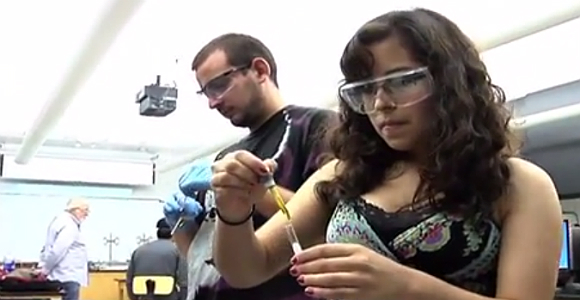
(Photo Credit: Long Beach City College)
The traditional four-year higher education path isn’t the answer for everyone. With that sentiment in mind, California’s career training programs have become a popular issue for educators who want to ensure that their students have the skills to be competitive in the “real world.” One of those institutions providing said skills is Long Beach City College (LBCC), which recently received a grant of $15 million — its largest ever — for programs that connect their training academics to high-demand industries.
The $15 million is just a fraction of the larger $250 million Career Pathways Trust program, the winners of which were announced last week by State Superintendent Tom Tolarkson. In 2013, the legislative effort was led by Senate President pro Tempore Darrell Steinberg who advocated that the funds should help K-12 schools connect with community colleges and facilitate their training for the thriving job sectors.
“One of the things that is essential to potential employers is the quality of education that their employees receive,” Steinberg told CA Fwd. “Every child, has a path to success and now we have the investment within the statement budget to begin moving towards that success.”
At Long Beach City College, specifically, the funding will be used to build stronger programs that train students for careers in advanced manufacturing and engineering technology.
LBCC president Eloy Oakley stated that the grant would allow also allow LBCC to create stronger partnerships with the Long Beach Unified School Districts (LBUSD) so that there’s a more streamlined transition from K-12 schools into career training programs. LBUSD also will get about $1.5 million of the $15 million that’s going to the LBCC-led consortium.
“[Advanced manufacturing and education technology] are two of the fastest growing economic sectors within the California economy,” President Oakley said. “As educators, we need to ensure that all of our students coming through out of the K-12 schools and into higher education system are career ready and that five to 10 years down the line, our graduates can accommodate that for our regional economy.”
Additionally, President Oakley said that the focus on these two particular industries would help promote a struggling middle class throughout the state.
“The kinds of jobs that we’re targeting are middle-class to upper-middle-class jobs,” President Oakley said. “These are jobs that require a firm foundation of skills and abilities and that are well-paying jobs. So I believe that these are exactly the kinds of jobs that we need to prepare not only benefit students, but the economy as a whole.”

